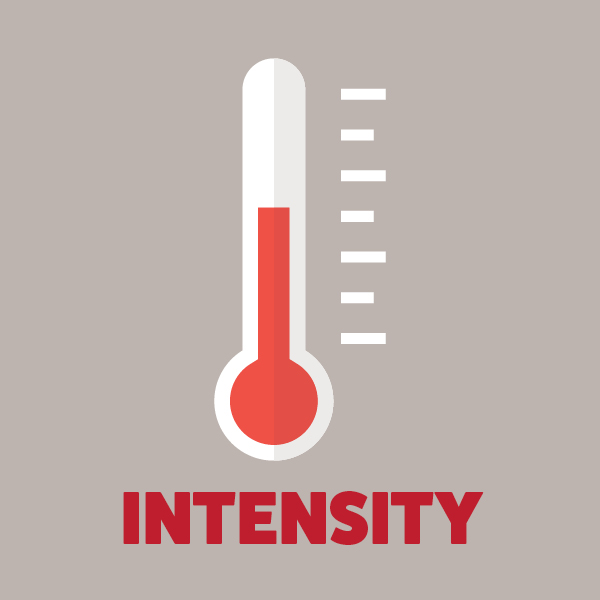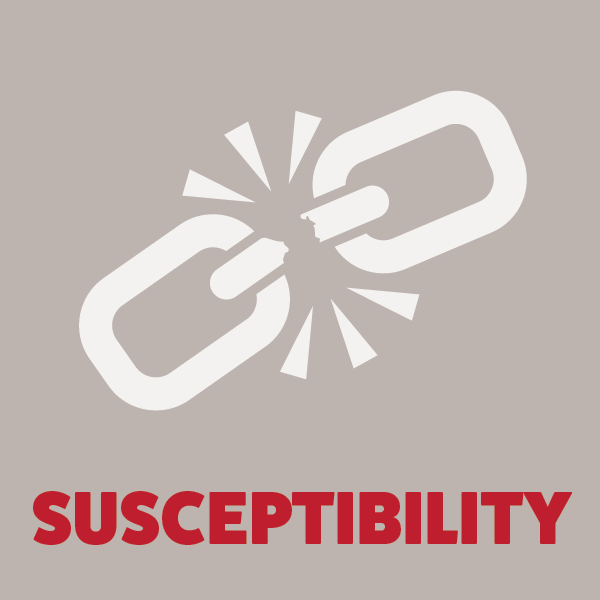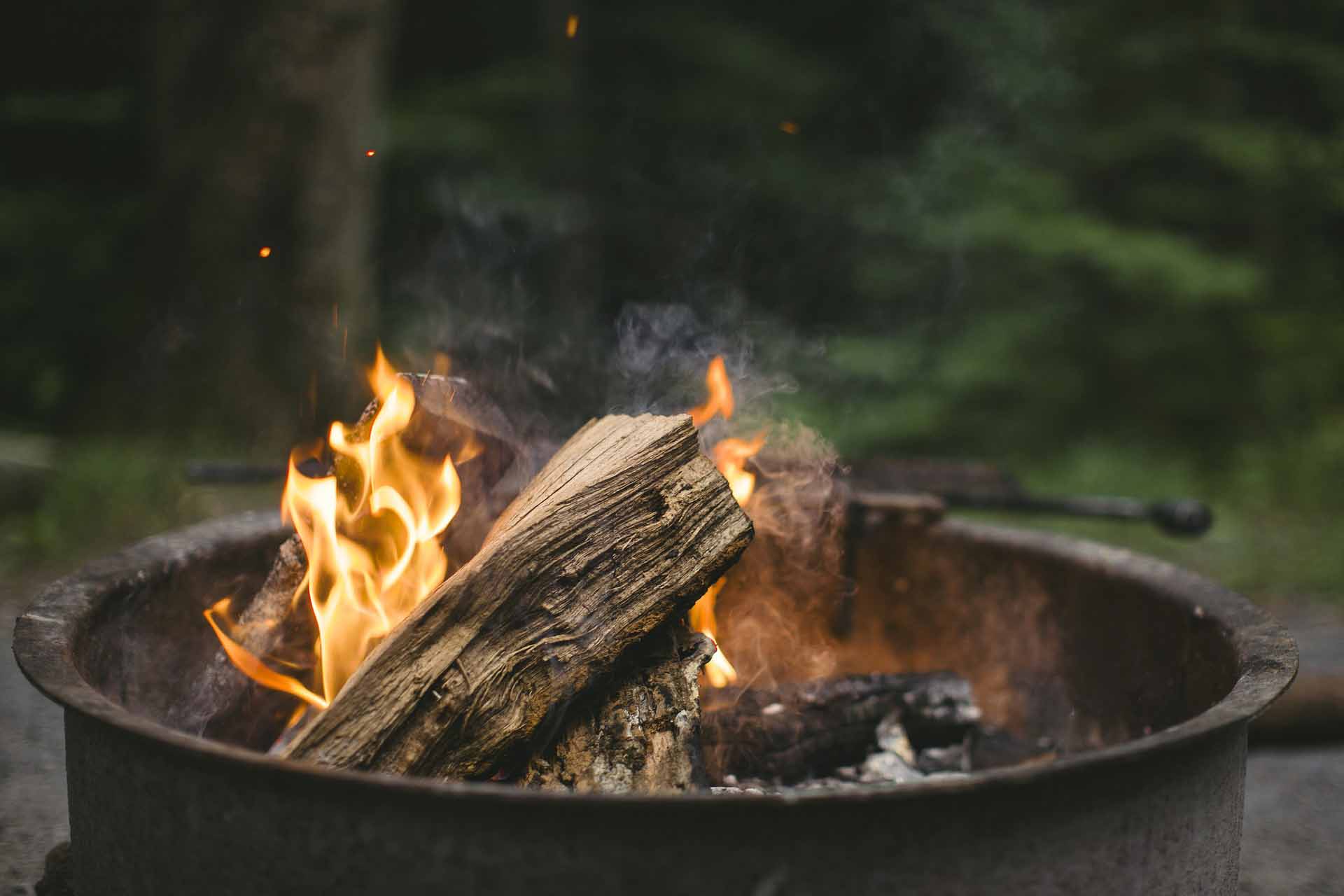
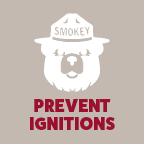
Prevent Ignitions
Reduce ignitions from campfires, debris burning, vehicles, and other sources.
About Preventing Ignitions
Nationally, nearly 9 out of 10 wildfires are caused by people. By preventing human-caused ignitions, we can reduce community wildfire risk.
Use the interactive data visualization below to identify the amount, types, and seasonality of human-caused wildfires in your community. This information can help you target your wildfire prevention efforts to be most effective.
Tips for using the visualization:
- Hover over any county for summary information.
- Click on a county to filter the graphs below the map to show only that county’s results.
- Click on an element in the graphs below the map to further filter the results.
- To unselect a county, click the white space next to the map. Filters above the map limit your results by state and decade.
Read about the data and methods used to create this data visualization.
Community Strategies for Preventing Human-Caused Ignitions

Understand your ignition types
Use the data visualization above to understand when, where, and what types of ignitions are most common in your community. Understanding the types and seasonality of your primary human-caused ignition sources can help make your strategies more effective.

Develop targeted messages
Target your outreach messages to have the greatest impact on your human-caused ignition patterns. For example, if most of your human-caused ignitions are from recreation during the summer, you may want to develop outreach materials for campgrounds to be posted by June, or hire a wildfire prevention specialist to visit trailheads during the summer.

Consider regulations & enforcement
Local governments and land management agencies may consider implementing and enforcing regulations that will help reduce ignitions. These could include:
- fire and activity restrictions,
- regulating high-hazard land uses like sawmills and propane farms,
- increased patrols of recreation sites, and
- equipment inspections.
Wildfire prevention education efforts—such as public service announcements, brochures, social media campaigns, and presentations—can encourage behavior changes and are successful, cost-effective strategies to help decrease the number of human-caused wildfires. Regulatory strategies by local governments and land management agencies can also be effective. For example, burning regulations and permit systems can be based on current fire danger and historical patterns. Tools such as land use planning and zoning can be useful for regulating high-hazard land uses such as sawmills and propane farms. Increased patrols by fire service professionals and regular equipment inspections in fire-prone areas are also effective strategies to reduce human-caused wildfires. Local forestry and Forest Service personnel can assist with identifying successful techniques.

Explore your community’s risk.
Community Tools
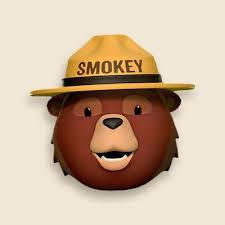
Smokey Bear
The Smokey Bear website provides tips and resources about how to be safe with your campfire, how to use and maintain outdoor equipment and vehicles in ways that prevent sparking a wildfire, how to prevent wildfires from backyard debris burning, and other ways to be fire-smart at home and on the go.
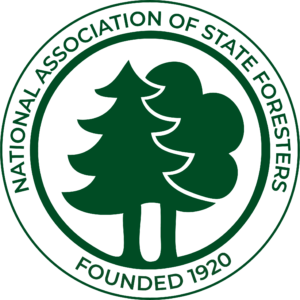
National Association of State Foresters
The National Association of State Foresters is a non-profit organization composed of the directors of forestry agencies in the states, U.S. territories, and the District of Columbia. State foresters manage and protect state and private forests, which encompass nearly two-thirds of the nation’s forests.
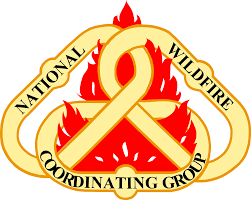
Communication, Education, and Prevention Committee (CEPC)
The Communication, Education, and Prevention Committee (CEPC) of the National Wildfire Coordinating Group provides national leadership, support, and coordination in all areas of wildland fire education and prevention. Prevention and education teams are available to support any geographic area preceding and during periods of high fire danger or fire activity.

Wildfire Safety Pictographs
Developed by FEMA’s U.S. Fire Administration, these free pictographs provide visual wildfire prevention messages. Using pictographs can help overcome language and literacy barriers.
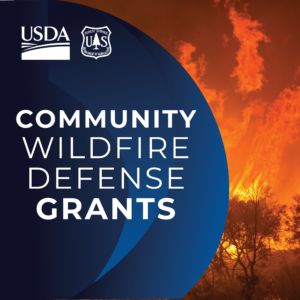
Community Wildfire Defense Grants (CWDG)
The Community Wildfire Defense Grant (CWDG) program provides grants to communities at risk from wildfire to develop or revise their community wildfire protection plans and carry out mitigation projects described within those plans. It is administered by the USDA Forest Service.
Research & Science
- Butry DT, & Prestemon JP. (2019). Economics of WUI/Wildfire Prevention and Education. In Manzello SL, (Ed.). Encyclopedia of Wildfires and Wildland-Urban Interface (WUI) Fires. Cham, Switzerland: Springer.
- Downing WM, Dunn CJ, Thompson MP, Caggiano MD, & Short KC. (2022). Human ignitions on private lands drive USFS cross-boundary wildfire transmission and community impacts in the western US. Scientific Reports, 12(1), 2624.
- Hermansen-Báez LA, Prestemon JP, Butry JT, Abt KL, & Sutphen R. (2019). Economic benefits of wildfire prevention education. Fire Management Today, 77(2), 18-19.
- Higuera PE, Cook MC, Balch JK, Stavros EN, Mahood AL, , & St Denis LA. (2023). Shifting social-ecological fire regimes explain increasing structure loss from western wildfires. Proceedings of the National Academy of Sciences – PNAS Nexus, 2(3).
- Short KC. (2014). A spatial database of wildfires in the United States, 1992-2011. Earth System Science Data 6:1-27.
- Short KC. (2015). Sources and implications of bias and uncertainty in a century of US wildfire activity data. International Journal of Wildland Fire. doi: http://dx.doi.org/10.1071/WF14190.
- Short KC. (2020). Fire Data. In: Manzello SL, ed. Encyclopedia of Wildfires and Wildland-Urban Interface (WUI) Fires. Cham, Switzerland. Springer.
- Short KC. (2022). Spatial wildfire occurrence data for the United States, 1992-2020, 6th Edition. [FPA_FOD_20221014]. Fort Collins, CO: USDA Forest Service Research Data Archive.
- Syphard AD & Keeley JE. (2015). Location, timing and extent of wildfire vary by cause of ignition. International Journal of Wildland Fire. Clayton, Australia: CSIRO Publishing.
Learn how these actions align with federal policies and initiatives.


